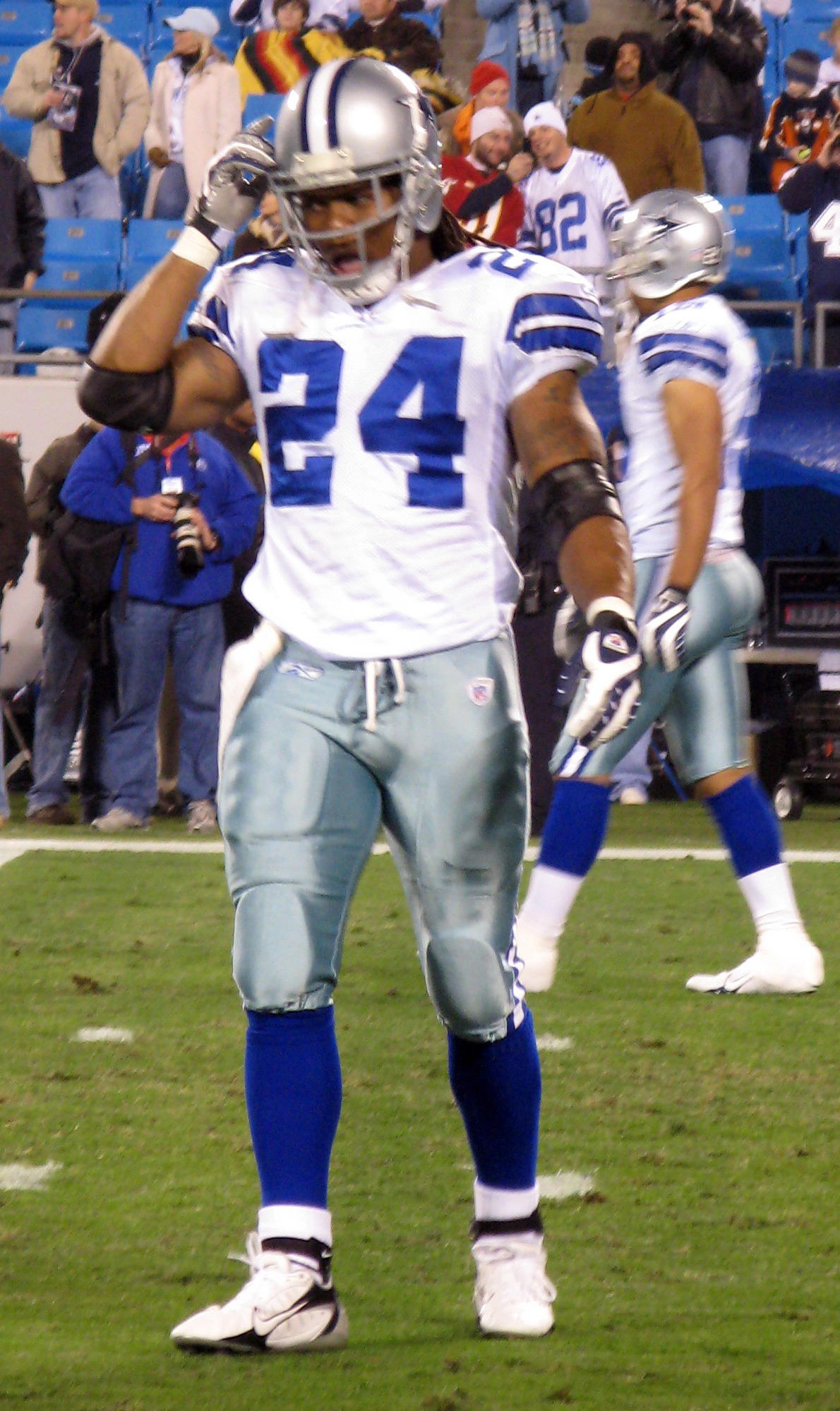
The sports world recently grappled with the somber news of Marion Sylvester Barber III’s passing, a former star running back whose dynamic presence on the field captivated fans for years. His death, at the age of 38, has now been officially attributed to heat stroke, according to a medical report released by the Collin County Medical Examiner’s Office. This conclusive finding provides poignant clarity to the initial uncertainty surrounding the circumstances of his untimely demise, categorizing his death as an accident and shedding light on the tragic end for a player remembered for his powerful, unyielding style.
Born on June 10, 1983, Marion Barber III demonstrated athletic prowess from a young age at Wayzata High School in Plymouth, Minnesota. He distinguished himself in football, baseball, and track. As a senior running back and defensive back, he amassed 1,778 rushing yards with 18 touchdowns and led his team with 10 interceptions. His versatility extended to baseball, where he was an Honorable Mention All-Conference center fielder, and in track, he qualified for the 2001 Minnesota State Class AA Championships in the 100 meters with a time of 10.9 seconds.
Barber continued his football career at the University of Minnesota, following in the footsteps of his father, Marion Barber Jr., a former New York Jets running back. Initially considered for the safety position, coaches wisely retained him at running back after observing his impressive abilities. This decision proved pivotal, as he became a cornerstone of the Golden Gophers’ offense and established himself among the program’s most prolific rushers.
During his collegiate tenure, Barber ranked fourth on the school’s all-time rushing list with 3,276 yards and second in all-purpose yards with 4,495. He also secured the second spot in rushing touchdowns with 35, surpassing his father’s collegiate total by one. Beginning in his sophomore year, he teamed up with Laurence Maroney to form one of college football’s premier running back duos, making NCAA Division I history as the first teammates to each rush for over 1,000 yards in consecutive seasons. His exceptional performance earned him an All-Big Ten Conference selection in 2003 as a redshirted sophomore.

After forgoing his senior season, Marion Barber III entered the 2005 NFL Draft and was selected by the Dallas Cowboys in the fourth round, 109th overall. His professional journey commenced with early challenges, including a toe infection necessitating surgery and preseason fumbles, which initially placed him at the bottom of the depth chart. However, injuries to Julius Jones and the ineffectiveness of Anthony Thomas created an opportunity, which Barber capitalized on with impressive 95-yard and 127-yard rushing performances against Seattle and Arizona, respectively. His robust play, coupled with his contributions to pass-blocking and special teams, cemented his role as the team’s backup running back.
The 2006 season witnessed Barber establishing a crucial niche as a third-down rusher and an effective game-closer, emerging as an exceptional red-zone threat. He led the NFC with 14 rushing touchdowns that year and became the first non-placekicker since 2000 to lead the Cowboys in scoring, with 96 points. His powerful, downhill running style began to shape his burgeoning reputation.
The 2007 season marked a significant zenith in his career, during which his bruising style earned him the nickname “Marion the Barbarian.” He became renowned as the league leader in breaking tackles, a testament to his personal mantra of “hit or get hit.” This aggressive approach yielded 975 rushing yards on 204 carries, an average of 4.8 yards per carry, and 10 rushing touchdowns. He also demonstrated versatility with 44 catches for 282 yards and two receiving touchdowns, earning his first Pro Bowl selection on December 18, 2007, despite his official backup status. He subsequently started in the divisional playoff loss to the New York Giants, a clear indication of his growing prominence.
Recognizing his indispensable value, the Cowboys offered Barber the highest tender as a restricted free agent in 2008. On May 20, 2008, he signed a substantial seven-year, 45 million contract with 16 million guaranteed, officially transitioning into a starting role. However, this substantial contract brought intensified scrutiny regarding his punishing running style, with ongoing discussions about its potential impact on his career longevity, as his yards per carry began to decline.

The 2009 season posed additional hurdles for Barber owing to the emergence of Tashard Choice and Felix Jones, compounded by various injury issues. Despite sustaining a torn quadriceps muscle, he exhibited remarkable resilience by participating in 15 games. The 2010 season proved to be disappointing for both Barber and the struggling Cowboys team, as he rushed for a career-low 374 yards on 113 carries, averaging 3.3 yards per attempt, and recorded only four rushing touchdowns, which also marked a career low. This decline ultimately resulted in his release by Dallas on July 28, 2011, bringing an end to his six-year tenure with the franchise.
Following his departure from the Cowboys, Marion Barber III signed a two-year, $5 million contract with the Chicago Bears on July 30, 2011. He secured the position of the second-string running back behind Matt Forte. His single season with the Bears was marred by a calf muscle injury that sidelined him for the first three regular-season games. In Week 14 against the Denver Broncos, while filling in for an injured Forte, he achieved his first 100-yard rushing game since 2009 and scored a touchdown. However, a crucial late-game decision to run out of bounds when the Bears needed to run out the clock enabled the Broncos to secure a victory, a moment that became a subject of considerable discussion.
Barber concluded his 2011 season with 422 rushing yards on 114 carries. On March 23, 2012, he officially announced his retirement from the NFL, bringing an end to his seven-season professional career. Throughout his 99 NFL games, including 42 starts, he accumulated 4,780 rushing yards on 1,156 carries, maintaining a career average of 4.1 yards per attempt, along with 53 rushing touchdowns. He also made significant contributions in the passing game, with 179 catches for 1,330 yards and 6 receiving touchdowns.

In the years following his retirement from the NFL, Marion Barber III faced personal challenges. In 2014, he was detained by the police and underwent a mental evaluation following an incident, which signaled early concerns about his well-being. These issues persisted, leading to his arrest in 2019 on two counts of criminal mischief for allegedly damaging two vehicles while running. He entered a no-contest plea to these charges, and in April 2022, he was sentenced to one year of probation, 60 hours of community service, and a fine of $2,000. Police reports indicated that Barber “had a known history of medical problems and mental health concerns,” highlighting the complexities of his post-playing life.
The discovery of Marion Barber III’s body on June 1, 2022, in his apartment in Frisco, Texas, was made after the police were prompted to conduct a welfare check due to a neighbor reporting water leaking from his unit. An employee at the apartment complex had submitted a service request for the leak on May 11 and had been unable to contact Barber for two weeks, despite making numerous phone calls and sending emails. When the officers arrived, they found an unopened letter that the employee had left on Barber’s door.
Upon entering the apartment, the officers found a bathtub faucet running and the thermostat set to 91 degrees Fahrenheit (33 degrees Celsius) with the heat turned “on.” Workout equipment was also present in the apartment. The Collin County medical examiner’s report noted, “Mr. Barber was known to exercise in sauna-like conditions,” directly linking these environmental factors to his established habits. His father, Marion Barber II, stated that his son’s body was decomposing upon discovery, suggesting that he had died several days prior; the police report indicated that Barber’s family had not heard from him for six days. The officers ultimately located his body in a bathroom shower, with the water not running at that time.

Significantly, Barber’s death coincided with the onset of a record-setting heat wave in the Dallas area and across Texas, during which temperatures soared into triple digits, placing stress on the state’s electrical grid. While the internal temperature of his apartment was self-induced, the broader context of extreme regional heat further underscores the severity of the circumstances under which he died.
The medical examiner’s definitive ruling that heat stroke was the cause of death highlights a critical medical emergency. The Centers for Disease Control and Prevention (CDC) explains that heat stroke occurs when the body can no longer regulate its temperature, leading to a rapid increase in body temperature, potentially reaching 106 degrees Fahrenheit within 10 to 15 minutes. During this condition, the body’s sweating mechanism fails, preventing it from cooling down.
Warning signs of heat stroke include an extremely high body temperature, a rapid pulse, a throbbing headache, dizziness, nausea, confusion, and red, hot, dry skin. The evidence found within Barber’s apartment, including the thermostat setting and his known habit of exercising in “sauna-like conditions,” tragically aligns with the physiological mechanisms and critical symptoms of heat stroke, resulting in his accidental death.
The news of Marion Barber III’s passing elicited a wave of condolences from the football community. The Dallas Cowboys issued a poignant statement on June 1, expressing profound grief: “We are heartbroken by the tragic death of Marion Barber III.” The team honored his relentless playing style, adding, “Marion was an old-school, hard-nosed football player who ran with the will to win every down.” They also emphasized his dedication and relationships, stating, “He had a passion for the game and a love for his coaches and teammates. Our hearts go out to Marion’s family and friends during this difficult time.

A funeral service was held on June 22 at Huntington Bank Stadium on the University of Minnesota campus, a significant venue given his collegiate achievements. Notably, his father confirmed that the family would not pursue CTE testing on his son’s brain. This decision contributes to the ongoing, complex discourse surrounding player health and long-term consequences in professional sports.
Marion Barber III’s legacy is ultimately defined by his powerful, unwavering commitment to the game, his distinctive, bruising running style, and the indelible mark he left on the Dallas Cowboys and the National Football League. He epitomized a gritty determination that deeply resonated with fans, serving as a truly formidable force on the field who consistently gave his all.
The story of Marion Barber III is a complex tapestry woven with threads of extraordinary athletic talent, relentless determination, and deeply personal struggles, ultimately culminating in a sudden and tragic end. His passing at a young age serves as a stark reminder of the often-unseen challenges faced by athletes transitioning from the intense spotlight of professional sports. While his on-field tenacity endeared him to millions, his later years underscored the quiet battles that many public figures face, far from the roar of the stadium. His journey from a multi-sport prodigy to a Pro Bowl NFL running back who embodied the “hit or get hit” philosophy was nothing short of remarkable. Yet, the circumstances of his death, brought to light through meticulous investigation, reveal a poignant vulnerability beneath the formidable exterior. The medical findings of heat stroke, exacerbated by self-induced environmental conditions within his home, weave a chilling narrative that compels reflection on health, privacy, and the enduring echoes of a demanding career. As the football community and beyond continue to mourn his loss, Marion Barber III will be remembered not only for his electrifying runs and tenacious play but also as a figure whose life, in its entirety, prompts a deeper understanding of the human element behind the athletic spectacle. His memory stands as a testament to both the thrilling highs of his football artistry and the quiet, profound complexities of life beyond the game, a stark and important lesson etched into the fabric of sports history.


